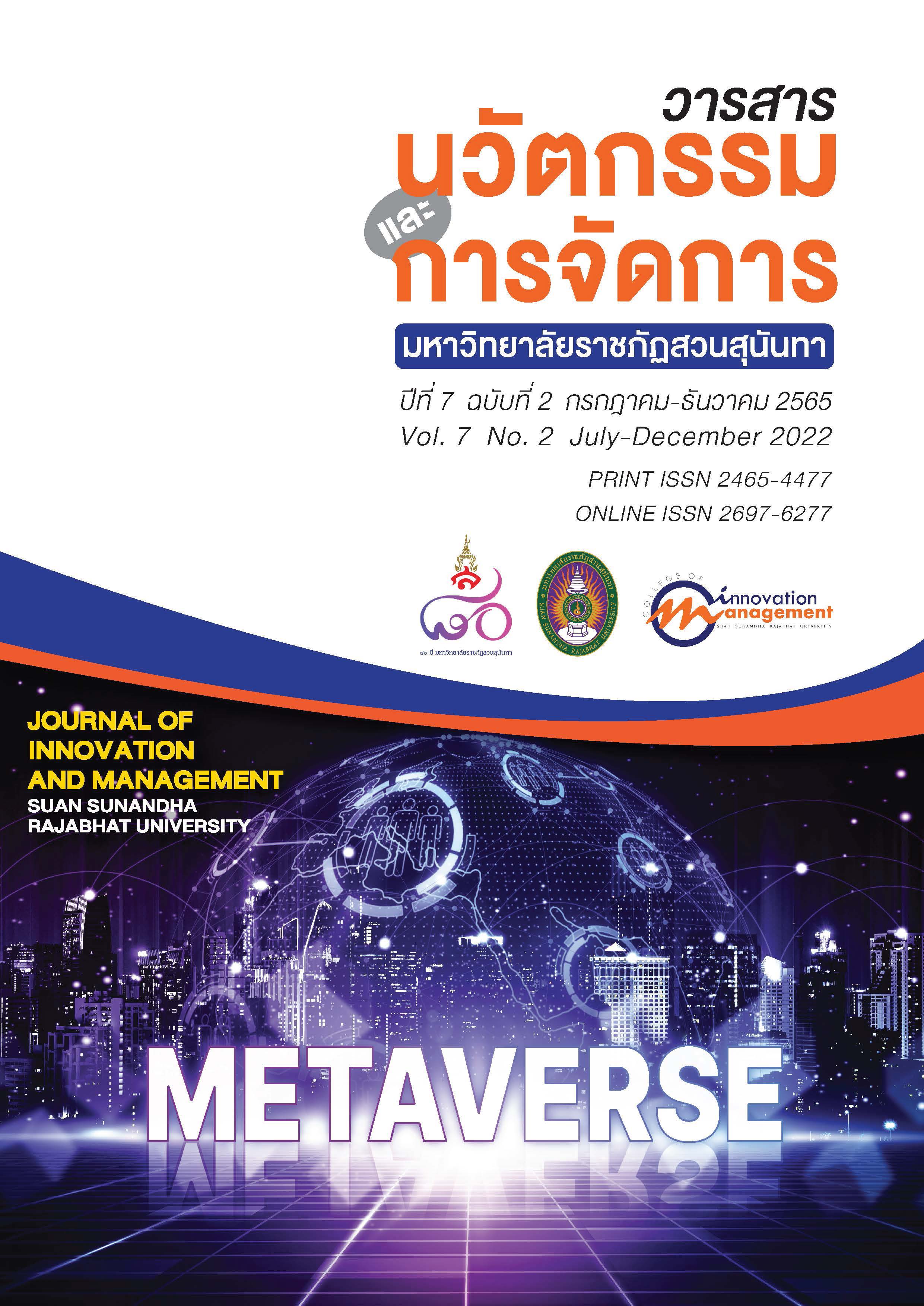A Prototype Toolkit for Developing Design Thinking Skills for Non-Designer Managerial Level
Keywords:
Design Thinking, Innovation, Creative Thinking, Research Sprint, PrototypingAbstract
This research is based on theoretical and practical concerns about the concept of Design Thinking (DT), its background, characteristics, process models, and process toolkit. Besides the literature review, a qualitative analysis of Stanford d.school is a well-known model of the DT process, and applied DT tools were made. The research provides a critical approach to DT to help the management better understand the benefits. The idea can be put into practice in business and help the managerial level become more creative thinking. Ten CEOs, both design and non-design backgrounds, were interviewed to identify the outlook of their business problem-solving and business innovation management process. DT workshop was provided with seven cross-disciplinary middle managers as participants to answer the two research questions: (1) What method is used for business problem-solving? (2) How does a manager integrate DT into their innovation processes? (3) How can a manager's creative skills and mindsets be optimized base on DT methodology? Evaluate the DT workshop format's impact and outcome in a non-designer context; all participants were asked to evaluate their understanding of DT before and after the workshop. After attending the workshop, all participants grow skills and mindsets in the field of DT. They applied the DT method in their projects, including ideation and development prototyping. All workshop participants planned to apply DT methods in their future projects. The impressive results in such a limited time frame by diverse Design Thinking teams promise to integrate DT in their problem-solving and Innovation process.
References
Agarwal, A., and Salunkhe, U. (2012). Impact of Including Design Thinking Competencies in Management Education - An Experimental Study. The Proceedings of the International Design Management Research Confererence, Boston, USA.
Best, K. (2012). Design as enabler of change. DMI Viewpoints. [Online]. Retrieved from: https://www.kathrynbest.com/wp-content/uploads/KBest_Design-Enabler-of-Change.pdf
Brown, T. (2009). Change by Design: How Design Thinking Transforms Organizations and Inspires Innovation. New York: Harper Collins.
Brown, T., and Wyatt, J. (2010). Design Thinking for Social Innovation By. Stanford Social Innovation Review, 8, 30-35. doi:10.1596/1020-797X_12_1_29
Creativitywakeup. (2021). Why the United Nations prioritised creativity. [Online]. Retrieved from: https://www.creativitywakeup.com/blog/wciw
Design_Council. (2019). Framework for Innovation: Design Council's evolved Double Diamond. [Online]. Retrieved from: https://www.designcouncil.org.uk/our-work/skills-learning/tools-frameworks/framework-for-innovation-design-councils-evolved-double-diamond/
Dickens, L., and Watkins, K. (1999). Action Research: Rethinking Lewin. Management Learning, 30, 127-140. doi:10.1177/1350507699302002
Dunne, D., and Martin, R. (2006). Design Thinking and How It Will Change Management Education: An Interview and Discussion. Academy of Management Learning and Education, 5, 512-523. [Online]. Retrieved from: https://www.semanticscholar.org/paper/Design-Thinking-and-How-It-Will-Change-Management-Dunne-Martin/0142ae9fd78f7ae821e8c15b5c03501fde1fa099
Elsbach, K., and Stigliani, I. (2018). Design Thinking and Organizational Culture: A Review and Framework for Future Research. Journal of Management, 44, 014920631774425. doi:10.1177/0149206317744252
Fayol, H. (2016). General and industrial management. Ravenio Books.
Hamel, G., and Breen, B. (2007). The Future of Management. Human Resource Management International Digest, 16. doi:10.1108/hrmid.2008.04416fae.001
Herrmann, N., and Herrmann-Nehdi, A. (2015). The Whole Brain Business Book: Unlocking the Power of Whole Brain Thinking in Organizations, Teams, and Individuals. 2nd ed. USA: McGraw Hill.
IDEO. (2015). The Field Guide to Human-Centered Design. [Online]. Retrieved from: https://www.designkit.org/resources/1
Kummitha, R. K. R. (2018). Institutionalising Design Thinking in social entrepreneurship. Social Enterprise Journal, 14(1), 92-107. doi:10.1108/SEJ-12-2016-0059
Martin, R. (2009). The Design of Business: Why Design Thinking is the next compattitive advantages. Massachusetts: Havard Business Press.
Meinel, C., and Leifer, L. (2012). Design Thinking Research. In H. Plattner, C. Meinel, and L. Leifer (Eds.), Design Thinking Research: Studying Co-Creation in Practice (pp. 1-11). Berlin, Heidelberg: Springer Berlin Heidelberg.
Miles, M. B., Huberman, A. M., and Saldaña, J. (2019). Qualitative Data Analysis: A Methods Sourcebook. 4th ed: USA: SAGE Publications.
Neuman, W. L. (2009). Social Research Methods: Qualitative and Quantitative Approaches. 7th ed. Massachusetts: Pearson.
Stanford, H. P. I. o. D. a. (2010). An introduction to Design Thinking process guide. [Online]. Retrieved from: https://stanford.io/2KykQ6I
Stevens, E. (2022). What Is Design Thinking? A Comprehensive Beginner's Guide. [Online]. Retrieved from: https://careerfoundry.com/en/blog/ux-design/what-is-design-thinking-everything-you-need-to-know-to-get-started/
Thoring, K., and Mueller, R. (2011). Understanding the Creative Mechanisms of Design Thinking: An Evolutionary Approach. doi:10.1145/2079216.2079236
Tschimmel, K. (2012). Design Thinking as an effective Toolkit for Innovation. The Proceedings of the XXIII ISPIM Conference: Action for Innovation: Innovating from Experience Conference (ISPIM), Barcelona, 1-20.
Veal, A. J., and Ticehurst, B. (2005). Business Research Methods: A Managerial Approach. Pearson Higher Education.
Downloads
Published
How to Cite
Issue
Section
License
Copyright (c) 2022 Journal of Innovation and Management

This work is licensed under a Creative Commons Attribution-NonCommercial-NoDerivatives 4.0 International License.
See Publication Ethics https://so03.tci-thaijo.org/index.php/journalcim/Ethics






